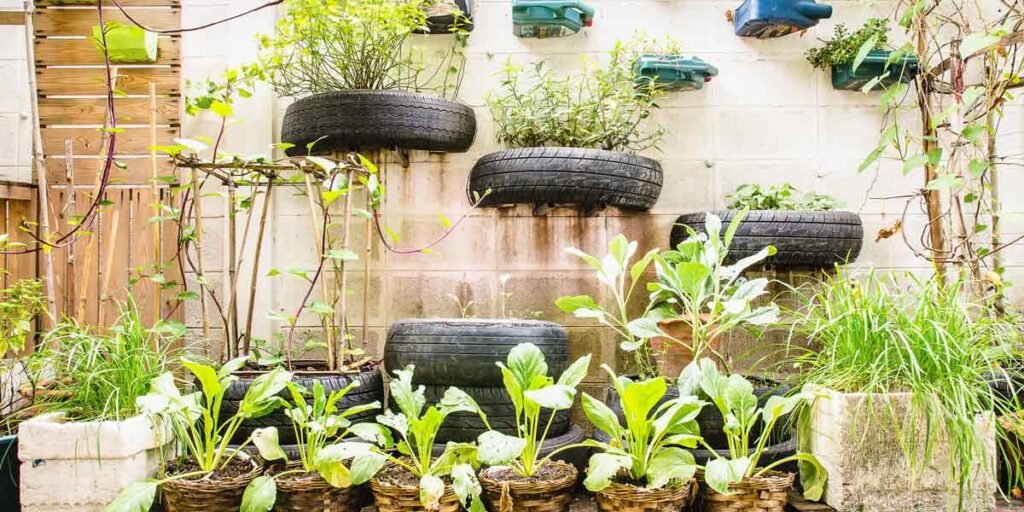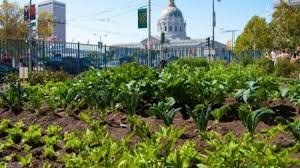Urban gardening is more than just a trend; it’s a transformative approach that adapts to the modern city lifestyle, enabling people to grow fresh produce and beautify their living spaces despite the constraints of urban environments. As cities become more crowded and the desire for self-sufficiency grows, urban gardening provides a practical solution. This comprehensive guide on Homestead.BlueRabbitrx.com will delve deeply into the various aspects of urban gardening, from planning and planting to maintaining and troubleshooting, to help you establish a successful urban garden.
Introduction
Welcome to Homestead.BlueRabbitrx.com, your ultimate resource for all things related to urban gardening. In today’s urban landscape, where space is limited and lifestyles are fast-paced, gardening might seem like a distant dream. However, with the right knowledge and tools, you can turn even the smallest space into a lush, productive garden. This guide is designed to offer you an in-depth exploration of urban gardening, helping you navigate the challenges and embrace the rewards of cultivating plants in an urban setting.
Urban gardening is a powerful way to bring nature into the city. It promotes sustainability, enhances well-being, and connects you with the food you eat. Whether you’re a novice gardener or a seasoned green thumb, Homestead.BlueRabbitrx.com provides the information you need to make your urban gardening journey successful and enjoyable.
Understanding Urban Gardening
Urban gardening involves growing plants in city environments, which often means working with limited space and resources. It’s a creative and practical solution for urban dwellers who want to grow their own food, reduce their carbon footprint, and enhance their living environment. This section will explore the key aspects of urban gardening and how Homestead.BlueRabbitrx.com can guide you through each step.
The Importance of Urban Gardening
Urban gardening offers numerous benefits that extend beyond the immediate enjoyment of fresh produce. Here are several reasons why urban gardening is a valuable practice:
- Access to Fresh Produce:
Growing your own fruits, vegetables, and herbs ensures you have access to fresh, nutritious food. Urban gardening reduces your reliance on store-bought produce, which often travels long distances and may be less fresh.
- Environmental Benefits:
Urban gardens contribute to sustainability by lowering the need for packaged goods and reducing transportation emissions. They also help combat the urban heat island effect by increasing greenery, which cools the surrounding area and improves air quality.
- Mental and Emotional Health:
Gardening has been shown to reduce stress and enhance mental well-being. The act of nurturing plants and spending time in nature can be a therapeutic experience, offering relaxation and a sense of accomplishment.
- Community Building:
Urban gardens often become community hubs, fostering social interaction and collaboration among neighbors. Community gardens, in particular, can strengthen community ties and promote shared responsibility.
- Educational Opportunities:
Urban gardens provide an excellent platform for learning about botany, sustainability, and nutrition. They offer practical experience in growing food and can be a valuable educational tool for children and adults alike.
Getting Started with Urban Gardening

Starting an urban garden requires careful planning and preparation. Homestead.BlueRabbitrx.com provides a detailed roadmap to help you set up your urban garden effectively.
1. Assessing Your Space
The first step in urban gardening is to evaluate your available space. Whether you have a small balcony, a rooftop, or just a few windowsills, understanding your space is crucial for successful gardening.
- Sunlight: Plants need adequate sunlight to grow. Most vegetables and herbs require at least 6 hours of direct sunlight each day. Observe your space throughout the day to identify areas that receive enough light and consider how this will impact your plant choices.
- Water Access: Reliable access to water is essential for maintaining a healthy garden. Ensure you have a convenient water source and consider how you will manage watering, especially during dry spells.
- Space Constraints: Urban environments often have limited space, so consider creative solutions for maximizing your growing area. Look for opportunities to use vertical space or multi-functional furniture to expand your gardening area.
2. Choosing the Right Plants
Selecting plants that thrive in urban environments is key to a successful garden. Homestead.BlueRabbitrx.com offers guidance on choosing the best plants for small spaces:
- Herbs: Herbs are perfect for container gardening due to their compact size and versatility. Consider growing basil, mint, cilantro, and parsley, which are well-suited to small pots and can be used in a variety of culinary dishes.
- Leafy Greens: Leafy greens such as lettuce, spinach, and kale are excellent choices for urban gardens. They grow quickly and can be harvested multiple times, providing a continuous supply of fresh greens.
- Compact Vegetables: Opt for dwarf or compact varieties of vegetables that are bred for container gardening. Cherry tomatoes, bell peppers, and radishes are good examples of vegetables that can thrive in small spaces.
- Flowers and Ornamentals: Incorporating flowers and ornamental plants adds beauty to your garden and can attract pollinators. Consider planting marigolds, petunias, or nasturtiums, which are well-suited to containers and can enhance the aesthetic appeal of your garden.
3. Container Gardening
Container gardening is a popular method for urban gardening, allowing you to grow plants in pots or other containers. Homestead.BlueRabbitrx.com provides tips on selecting and using containers effectively:
- Choosing Containers: Select containers with good drainage to prevent waterlogging. Containers can range from traditional pots to innovative solutions such as hanging baskets or vertical planters. Ensure the containers are large enough to accommodate the root systems of your plants.
- Potting Mix: Use a high-quality potting mix designed for container gardening. Potting mixes provide better aeration and drainage than garden soil, which can become too dense in containers. Look for mixes that contain ingredients like peat moss, perlite, and compost.
- Planting Techniques: Follow proper planting techniques to ensure healthy plant growth. Space plants according to their mature size, and avoid overcrowding to allow for adequate airflow and light. Be mindful of the specific needs of each plant species.
4. Soil and Fertilization
Healthy soil is essential for a productive garden. Homestead.BlueRabbitrx.com offers advice on improving soil quality and choosing the right fertilizers:
- Improving Soil Quality: For container gardens, use a high-quality potting mix that provides good drainage and aeration. For larger urban gardens, enhance soil quality with compost, organic matter, or soil conditioners. Compost improves soil structure, fertility, and moisture retention.
- Choosing Fertilizers: Use organic fertilizers to provide essential nutrients to your plants. Compost, worm castings, and organic granular fertilizers are excellent options for enriching the soil. Avoid synthetic fertilizers, which can lead to nutrient imbalances and environmental harm.
- Fertilization Schedule: Follow a regular fertilization schedule based on the needs of your plants. Different plants have varying nutrient requirements, so tailor your fertilization approach to the specific needs of your garden.
Maintaining Your Urban Garden
Ongoing maintenance is key to a successful urban garden. Homestead.BlueRabbitrx.com provides practical advice on keeping your garden healthy and productive:
1. Watering
Consistent and proper watering is essential for plant health. Homestead.BlueRabbitrx.com recommends the following watering practices:
- Establishing a Watering Routine: Water your plants regularly, particularly during hot or dry periods. Early morning is the best time to water, as it allows plants to absorb moisture before the heat of the day evaporates it.
- Watering Techniques: Use a watering can, drip irrigation system, or soaker hoses to deliver water directly to the plant roots. Avoid overhead watering to reduce the risk of fungal diseases and to ensure water reaches the root zone effectively.
- Watering Needs: Adjust your watering routine based on the specific needs of your plants and the environmental conditions. Container plants may require more frequent watering than garden beds due to their limited soil volume.
2. Pest Control
Pests can be a common issue in urban gardens. Homestead.BlueRabbitrx.com provides natural pest control methods to keep your plants healthy:
- Preventive Measures: Maintain plant health through proper watering, fertilization, and spacing. Healthy plants are less likely to attract pests. Regularly inspect your plants for signs of pest activity.
- Natural Remedies: Use natural pest control methods such as neem oil, insecticidal soap, or introducing beneficial insects like ladybugs to manage pest populations. Avoid using chemical pesticides, which can be harmful to beneficial insects and the environment.
- Integrated Pest Management: Implement an integrated pest management (IPM) approach that combines preventive measures, biological controls, and cultural practices to manage pests effectively and sustainably.
3. Harvesting
Harvesting your crops at the right time ensures the best flavors and nutritional value. Homestead.BlueRabbitrx.com offers tips on harvesting different types of plants:
- Timing: Harvest fruits and vegetables when they are ripe but not overripe. Check specific harvesting guidelines for each type of plant to maximize yield and quality. For leafy greens, harvest leaves from the outside of the plant to encourage continued growth.
- Techniques: Use clean, sharp tools to harvest crops and avoid damaging the plants. Regular harvesting encourages continued production and helps prevent overripe fruit from attracting pests.
- Storage: Store harvested produce properly to maintain freshness. Use refrigeration for perishable items and consider preserving excess produce through canning, freezing, or drying.
Troubleshooting Common Urban Gardening Challenges

Urban gardening comes with its own set of challenges. Homestead.BlueRabbitrx.com helps you address these common issues:
1. Limited Space Solutions
One of the most common challenges in urban gardening is limited space. Here’s how to make the most of what you have:
- Vertical Gardening: Utilize vertical space by installing wall-mounted planters, shelves, or vertical garden systems. This approach allows you to grow more plants without requiring additional ground space. Hanging baskets and trellises can also be used for climbing plants like cucumbers or beans.
- Container Gardening: Embrace container gardening to grow a variety of plants in small spaces. Choose compact, space-saving containers that can be placed on balconies, windowsills, or small patios. Container gardening also offers flexibility, as containers can be moved to maximize sunlight exposure.
- Community Gardens: If your personal space is extremely limited, consider joining a community garden. These shared garden plots provide access to larger growing areas and foster community engagement. Community gardens often offer resources and support, making it easier to manage and enjoy your gardening experience.
2. Soil Quality Issues
Urban environments can present unique soil quality issues, especially in areas with limited access to natural soil. Here’s how to tackle soil-related challenges:
- Container Mixes: Use high-quality potting mixes specifically designed for container gardening. These mixes typically contain a blend of peat moss, perlite, and compost to ensure good drainage and aeration. Avoid using garden soil, as it can become too compacted and may not provide the necessary nutrients for container plants.
- Soil Testing: For larger urban garden beds, consider conducting a soil test to determine nutrient levels and pH. This information can help you amend the soil with appropriate fertilizers and soil conditioners. Many local agricultural extensions or garden centers offer soil testing services.
- Improving Soil Structure: Incorporate organic matter, such as compost or aged manure, into your garden beds to improve soil structure and fertility. Organic matter enhances water retention, promotes beneficial microbial activity, and provides essential nutrients to plants.
3. Environmental Challenges
Urban gardens may face environmental challenges such as pollution, heat islands, and wind exposure. Here’s how to mitigate these issues:
- Pollution: To address air and soil pollution, choose plants that are known to be resilient and capable of thriving in urban environments. Additionally, consider using raised beds or containers to keep plants away from potentially contaminated soil.
- Heat Islands: Urban areas often experience the heat island effect, where temperatures are higher due to concrete and asphalt. To combat this, provide shade for plants by using shade cloths or incorporating taller plants to shield more delicate crops. Choose heat-tolerant plant varieties that can withstand higher temperatures.
- Wind Protection: Strong winds can damage plants and reduce their growth. Create windbreaks using fences, trellises, or strategically placed plants to shield more vulnerable species. Container gardens can also be secured with weights or anchored to prevent tipping.
Advanced Urban Gardening Techniques

Once you’ve mastered the basics of urban gardening, you might want to explore advanced techniques to further enhance your gardening experience. Homestead.BlueRabbitrx.com offers insights into these methods:
1. Hydroponics
Hydroponics is a soilless gardening method that uses nutrient-rich water to grow plants. This technique is ideal for urban gardens with limited soil space and allows for precise control over nutrient delivery. Homestead.BlueRabbitrx.com provides guidance on setting up a hydroponic system, including selecting the right equipment and understanding nutrient requirements.
2. Aquaponics
Aquaponics combines hydroponics with aquaculture, creating a symbiotic environment where fish and plants benefit from each other. Fish waste provides nutrients for the plants, while the plants help filter the water for the fish. This sustainable method can be a fascinating addition to urban gardening, offering both fish and fresh produce. Homestead.BlueRabbitrx.com covers the basics of aquaponics and how to get started.
3. Green Roofs and Walls
Green roofs and walls are innovative ways to incorporate gardening into urban architecture. Green roofs involve planting vegetation on building rooftops, while green walls feature plants growing vertically on building facades. These techniques not only enhance aesthetics but also improve insulation and reduce energy consumption. Homestead.BlueRabbitrx.com explores how to implement green roofs and walls, including design considerations and plant selection.
4. Edible Landscaping
Edible landscaping integrates edible plants into decorative garden designs. This approach combines aesthetics with functionality, allowing you to grow fruits, vegetables, and herbs as part of your landscape. Homestead.BlueRabbitrx.com offers ideas for incorporating edible plants into your garden design, from creating herbaceous borders to designing fruit tree groves.
Conclusion
Urban gardening is a rewarding and impactful way to transform your city living space into a vibrant, productive oasis. Whether you’re growing herbs on a windowsill, tending to a container garden on your balcony, or exploring advanced techniques like hydroponics and green roofs, Homestead.BlueRabbitrx.com is your go-to resource for guidance and inspiration.
By embracing urban gardening, you not only enhance your living environment but also contribute to a more sustainable and connected community. From the initial planning stages to advanced techniques, this guide provides the knowledge and tools you need to succeed in your urban gardening journey.
With careful planning, creativity, and dedication, you can turn any urban space into a thriving garden. Homestead.BlueRabbitrx.com is here to support you every step of the way, offering expert advice, practical tips, and inspiration to help you achieve your gardening goals.
Happy gardening!
